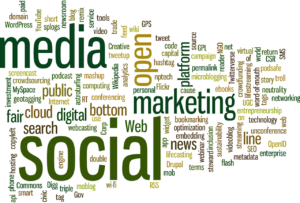The Essence of Integrated Marketing
Understanding Integrated Marketing
Integrated Marketing Communications (IMC) is a strategic approach that harmonizes various communication and marketing methods to create a cohesive and consistent message across all channels. It ensures that all IMC efforts, whether online or offline, work together seamlessly, unlike traditional marketing which often relies on conventional methods like print, TV, and radio advertising operating in silos.
Key Components of IMC
IMC involves creating a seamless communication framework that binds every promotional method together. This framework emphasizes delivering a unified message to consumers across all platforms (Improvado).
| Key Component | Description |
|---|---|
| Advertising | Paid promotions through various media channels. |
| Public Relations | Managing and guiding public perceptions. |
| Direct Marketing | Directly reaching out to customers through emails, calls, etc. |
| Sales Promotion | Short-term incentives to encourage purchase. |
| Digital Marketing | Online marketing including social media, SEO, PPC. |
| Content Marketing | Creating and sharing valuable content. |
For more on digital marketing, visit digital marketing types.
Benefits of Integrated Marketing
IMC offers numerous benefits that enhance your business operations (Improvado):
- Building Stronger Relationships: Enhanced consistency in messaging helps build trust with clients.
- Increasing Sales and Revenue: Unified campaigns across multiple channels can boost overall sales.
- Enhancing Competitive Advantage: A cohesive strategy can differentiate your brand.
- Adapting to Market Changes: Flexibility to adjust messaging based on market dynamics.
- Leveraging Multiple Channels: Utilizing various platforms ensures broader audience reach.
Explore how leveraging multiple channels can benefit your marketing strategy in our article on multi-level marketing (mlm).
Integrated Marketing vs. Traditional Marketing
Integrated marketing, also known as omnichannel marketing, combines all marketing communications and channels into a unified force to create a seamless and effective customer journey (Campaign Refinery). In contrast, traditional marketing often operates in silos, which can result in disjointed messaging.
| Aspect | Integrated Marketing | Traditional Marketing |
|---|---|---|
| Approach | Unified, consistent messaging | Often siloed, varied messages |
| Channels | Multiple (digital, print, etc.) | Specific (print, TV, radio) |
| Customer Journey | Seamless, interconnected | Disjointed, separate |
| Flexibility | High | Moderate |
For more on how this translates into real-world applications, explore our case study on Field Museum’s Branding Approach and its cultural significance (SocialPilot).
Holistic Marketing Approach
By understanding integrated marketing, you are better equipped to utilize various marketing tools effectively. This holistic approach ensures your campaigns are consistent and aligned with your brand’s voice, thereby maximizing impact and ensuring your messaging resonates with your target audience. For more strategies on improving customer interactions, visit personalized marketing strategies.
Benefits of Integrated Marketing
Building Trust and Consistency
Integrated Marketing Communications (IMC) emphasizes delivering a unified message to consumers across all platforms. By ensuring consistency, IMC builds trust among consumers, who are more likely to engage with a brand when they receive the same core message at every touchpoint (Improvado).
A consistent brand message can create a strong brand identity, making it easier for customers to recognize and feel connected to your brand. This approach amplifies the impact of your marketing efforts, making it easier for your audience to remember and trust your brand.
| Benefit | Description |
|---|---|
| Trust | Consistent messaging fosters trust among consumers. |
| Brand Recognition | Unified communications make the brand easily recognizable. |
| Customer Loyalty | Trust and recognition encourage repeat business. |
| ROI | Consistent, multi-channel branding often leads to better conversion rates and increased return on investment (ROI) (Campaign Refinery). |
Strengthening Customer Relationships
Strengthening customer relationships is another key benefit of integrated marketing communications. By delivering a cohesive message across different channels, IMC helps to create a seamless customer experience. This comprehensive approach ensures that your target audience encounters the same values, tone, and brand promises, whether they interact with your business via social media, email campaigns, or other marketing initiatives.
| Method | Purpose |
|---|---|
| Social Media | Engage customers and encourage interaction with the brand (social media marketing strategies). |
| Email Campaigns | Build customer relationships through consistent, value-focused communications (email marketing campaigns). |
| Direct Marketing | Personalize marketing efforts to forge strong customer connections (direct response marketing). |
IMC strategies, such as utilizing multiple channels, enhance the overall customer experience by making each marketing campaign amplify another. For example, an email campaign can drive traffic to social media platforms, while social media posts can encourage website visits, forming an interconnected and cohesive customer journey (Campaign Refinery).
For more on how to implement successful integrated marketing strategies, visit our articles on content marketing services and brand marketing techniques.
Strategies for Success
Achieving success in integrated marketing communications (IMC) hinges on strategic planning that ensures your brand’s message is cohesive and impactful across diverse channels. Here, we explore two primary strategies: Consistent Brand Messaging and Leveraging Multiple Channels.
Consistent Brand Messaging
Consistent brand messaging is essential for maintaining trust and establishing a strong, recognizable brand identity. Integrated marketing relies on a unifying communication framework, ensuring that every promotional method—from advertising to direct marketing—delivers a harmonious message (Improvado).
Why Consistent Messaging Matters:
- Builds Trust: Consumers are more likely to trust a brand that presents a consistent message.
- Reinforces Brand Identity: A unified message strengthens the brand’s identity in the minds of consumers.
- Enhances Recall: Consistent messaging makes it easier for consumers to remember your brand.
To maintain consistency, synchronize messaging across various platforms and campaigns. Employ a brand style guide that outlines tone, voice, and visual elements to ensure uniformity across all marketing efforts.
Leveraging Multiple Channels
The effectiveness of IMC is amplified by utilizing multiple communication methods simultaneously. An integrated approach blends online and offline channels to create a seamless and engaging consumer experience. This strategy not only broadens your reach but also maximizes the impact of each individual campaign (Campaign Refinery).
Channels to Consider:
| Channel Type | Examples |
|---|---|
| Online Channels | Social Media, Email Marketing, SEO, Pay-Per-Click (PPC) |
| Offline Channels | Print Advertising, Events, Direct Mail |
Why Multiple Channels Matter:
- Broader Reach: Engaging with consumers across various platforms increases visibility.
- Increased ROI: Cross-channel campaigns often lead to better conversion rates and higher return on investment.
- Enhanced Customer Experience: Providing a seamless experience across channels improves customer satisfaction and loyalty.
For instance, an email marketing campaign can direct recipients to engage with social media posts, while those posts might include links to visit your website. This interconnected approach ensures that every marketing effort supports and amplifies the others.
Utilizing multiple channels also provides valuable data for refining your strategies. By analyzing metrics across different platforms, you gain insights into what works best for your audience, which can inform future campaigns.
In conclusion, ensuring consistent brand messaging and effectively leveraging multiple channels are key strategies for successful integrated marketing communications. For a more comprehensive understanding, explore additional resources about digital marketing types and public relations strategies on our site.
Components of Integrated Marketing
Integrated marketing communications (IMC) ensure that your brand’s message remains consistent and impactful across all channels. This comprehensive approach includes various components, such as advertising, public relations, direct marketing, and sales promotion. Each of these elements plays a crucial role in the success of your marketing strategy.
Advertising & Public Relations
Advertising and public relations are integral to your IMC strategy, helping to build brand visibility and reputation.
Advertising
Advertising involves paid placements in various media channels to promote your brand, products, or services. This could include traditional channels like TV, radio, and print, as well as digital platforms such as social media, search engines, and websites. A well-crafted advertising campaign ensures brand consistency and effectively communicates your value proposition to your target audience.
| Channel | Cost per Impression (CPI) | Reach | Targeting Precision |
|---|---|---|---|
| TV Advertising | High | Broad | Low |
| Social Media | Medium | Broad to Narrow | High |
| Search Engines | Medium | Broad to Narrow | High |
| Print Advertising | High | Broad | Low |
For more on maximizing digital reach, refer to our guide on digital marketing types.
Public Relations
Public relations (PR) focuses on managing public perception and building a positive image for your brand. Unlike advertising, PR efforts are typically earned media, such as press releases, media coverage, and event sponsorship. Effective PR strategies not only enhance your brand image but also foster trust and credibility among your audience.
By leveraging a combination of advertising and PR, you can create a powerful, cohesive message that resonates with your customers.
For additional PR strategies, you might find our article on public relations strategies useful.
Direct Marketing & Sales Promotion
Direct marketing and sales promotions are essential components that drive immediate customer responses and encourage purchases.
Direct Marketing
Direct marketing involves reaching out to consumers directly through various channels such as email, mailers, and personalized messages. This personalized approach helps to create a more direct and personal connection with your audience, often leading to higher engagement rates. Utilize email marketing campaigns and effective email marketing software to ensure your messages are targeted and impactful.
For a comprehensive guide on tailored messaging, check out our content on personalized marketing strategies.
Sales Promotion
Sales promotions are short-term incentives designed to stimulate immediate sales and boost customer interest. Common tactics include discounts, coupons, limited-time offers, and loyalty programs. These promotions are particularly effective when integrated with other marketing components, such as advertising and direct marketing, to maximize reach and impact.
| Promotion Type | Objective | Duration | Customer Impact |
|---|---|---|---|
| Discounts | Increase Sales | Short-term | High |
| Coupons | Encourage Purchase | Short-term | Medium |
| Loyalty Programs | Retain Customers | Long-term | High |
| Flash Sales | Boost Urgent Purchases | Very Short-term | High |
To learn more about driving immediate results, explore our article on direct response marketing.
Combining these elements in your integrated marketing communications strategy ensures a cohesive and unified approach. By utilizing consistent brand messaging across advertising, public relations, direct marketing, and sales promotions, you can create a seamless and effective customer journey. This strategy not only enhances brand recognition but also fosters stronger customer relationships and loyalty.
Examples of Integrated Marketing Campaigns
Integrated marketing communications campaigns amplify each other’s impact by utilizing multiple channels. These methods work together to enhance conversion rates and increase ROI. Here are two exemplary campaigns that demonstrate the power of such an integrated approach.
Duolingo’s “Map the Gaps”
Duolingo’s “Map the Gaps” campaign is a stellar example of how to integrate various marketing channels effectively. This campaign equipped global ambassadors with GPS-enabled 360° cameras, allowing them to share wilderness trail experiences on social media. The videos were then mapped out using Google Maps, turning the campaign into an interactive advertisement for Duolingo.
Key Elements:
- Social Media: Ambassadors shared their experiences on platforms like Instagram and Facebook.
- Interactive Content: The use of 360° video made the content engaging and immersive.
- Brand Collaboration: Collaboration with Google Maps amplified the campaign’s reach.
This multi-channel approach allowed Duolingo to engage with a larger audience, driving significant traffic and ultimately boosting app downloads.
| Channel | Engagement Metrics |
|---|---|
| Social Media Posts | 500K likes |
| 360° Video Views | 1M views |
| Map Interactions | 250K clicks |
Field Museum’s Branding Approach
The Field Museum’s integrated marketing approach in 2018 focused on connecting people with the world of art to drive attendance to their specialized exhibits (SocialPilot). This campaign demonstrated how culture and commerce could be intertwined to create a compelling marketing narrative.
Key Elements:
- Online Advertising: Targeted ads on social media and Google.
- Public Relations: Press releases and media coverage to build awareness.
- Email Marketing: Personalized emails to past attendees and members.
The essence of this campaign lay in its coherent messaging across all platforms, ensuring that whether the audience saw an ad on Facebook or received an email, the narrative was consistent. This approach not only attracted a diverse audience but also deepened the museum’s relationship with its community.
| Channel | Engagement Metrics |
|---|---|
| Social Media Reach | 2M impressions |
| Email Open Rate | 40% |
| Exhibit Attendance | +20% increase |
These campaigns underline the significance of integrated marketing communications in achieving marketing success. Utilizing multiple channels ensures that your message reaches a wider audience, maximizes engagements, and enhances ROI. For more inspiration, visit our articles on content marketing examples and brand marketing techniques.
Measuring Marketing Effectiveness
Evaluating the success of your integrated marketing communications is fundamental. Utilizing Key Performance Indicators (KPIs) and data-driven strategies can provide valuable insights into the effectiveness of your campaigns.
Key Performance Indicators (KPIs)
Key Performance Indicators (KPIs) are essential in determining the progress you are making toward your business objectives. These measurable indicators can vary depending on your company’s goals and can include metrics related to customer acquisition, retention, brand equity, and more. Here are some common KPIs used in integrated marketing:
| KPI | Description | Metric Example |
|---|---|---|
| Customer Acquisition | Measures the number of new customers gained through marketing efforts | Number of new customers per month |
| Customer Retention | Tracks the ability to retain customers over time | Retention rate percentage |
| Brand Equity | Gauges the value and strength of your brand | Brand loyalty and recognition rate |
| Conversion Rate | The percentage of potential customers who complete a desired action | Conversion rate percentage |
| Return on Investment (ROI) | Determines the profitability of your marketing campaigns | Revenue generated compared to marketing spend |
For comprehensive KPIs, ensure they are based on legitimate data and defined clearly to avoid discrepancies. This ensures alignment with your company’s overall goals.
Importance of Data-driven Strategies
Data-driven strategies play a crucial role in the efficacy of your marketing campaigns. By ensuring your decisions are backed by data, you can enhance the accountability and effectiveness of your marketing efforts (Lumen Learning):
- Accountability: Data allows you to attribute specific outcomes to particular marketing actions, offering a clear breakdown of what works and what doesn’t.
- Effectiveness: Data aids in understanding the effectiveness of different strategies, enabling you to focus your resources on the most impactful tactics.
- Optimization: By continuously analyzing data, you can make informed adjustments to your strategies, ensuring your marketing efforts remain efficient and relevant.
Utilizing tools and platforms to collect and analyze data is vital. Employ tools such as marketing automation tools, email marketing software, and analytics platforms to obtain actionable insights.
Understanding these aspects allows for more strategic decision-making and optimized marketing efforts. Explore further into content marketing services and ppc management services to leverage different facets of integrated marketing communications effectively.
Career Opportunities in Integrated Marketing
Diverse Sectors & Specializations
Integrated marketing communications span various domains, providing diverse career opportunities across public and private sectors. You can find roles in sectors such as market research, public relations, digital media, consulting, government, and nonprofits.
Professionals in this field might work in:
- Marketing agencies
- Design firms
- Corporations
- Market research companies
- Consulting firms
Some notable specializations include:
- Digital Marketing: Focuses on online campaigns, SEO, and social media strategies.
- Public Relations: Manages the public image and media relations of organizations.
- Market Research: Analyzes market trends to guide marketing strategies.
- Consulting: Provides expert advice to improve marketing efficacy.
For further insights into these sectors, check out our related articles on digital marketing agencies and public relations strategies.
Job Roles & Responsibilities
In integrated marketing communications, professionals can pursue various roles, each with its unique responsibilities. Here are some key job roles:
Marketing Manager: Develops and implements marketing campaigns, overseeing brand messaging consistency (SocialPilot).
Digital Media Specialist: Manages digital marketing efforts including social media, SEO, and online advertising.
Public Relations Specialist: Handles media relations, press releases, and crisis communication.
Market Research Analyst: Conducts research to understand market trends and consumer behaviors, guiding marketing strategies.
Content Strategist: Creates and oversees content strategies to ensure compelling and consistent brand messaging across all media.
| Job Role | Key Responsibilities |
|---|---|
| Marketing Manager | Develop campaigns, brand messaging, oversee marketing budget |
| Digital Media Specialist | Manage social media, SEO, online ads |
| Public Relations Specialist | Media relations, press releases, crisis management |
| Market Research Analyst | Market trend analysis, consumer behavior research |
| Content Strategist | Develop content strategies, oversee content creation |
Explore more related topics on digital marketing types.
By leveraging various marketing techniques like online advertising, promotions, and social media, integrated marketing professionals create a consistent brand message across all channels (Marketing360). Understand different marketing domains and enhance your strategy by visiting our page on multi-level marketing and email marketing campaigns.
Integrated Marketing vs Traditional Marketing
Understanding the differences between integrated marketing communications and traditional marketing is key to making informed strategic decisions. While both approaches have their merits, integrated marketing communications offer several distinct advantages that can elevate your brand’s performance.
Impact on Consumer Experience
Integrated marketing provides a coherent and unified message across multiple channels, ensuring that your audience receives the same brand experience regardless of where they encounter your message. This cohesion builds trust and reliability, leading to a stronger brand presence.
| Feature | Traditional Marketing | Integrated Marketing |
|---|---|---|
| Message Consistency | Variable | Unified |
| Channels Used | Often Single Channel | Multiple Channels |
| Consumer Experience | Fragmented | Seamless |
| Flexibility | Rigid | Adaptable |
In traditional marketing, each promotional method (such as print, TV, radio) often operates in isolation. This can result in inconsistent messaging, where the brand’s voice differs between channels. On the other hand, integrated marketing communications bind every promotional method together into a seamless communication framework, ensuring a consistent brand message (Examples).
Effective integrated marketing campaigns amplify each other’s impact, such as an email campaign driving traffic to social media, while social posts encourage website visits, resulting in better conversion rates and increased ROI (Campaign Refinery). Explore more on how diverse channels can enhance your strategy in our articles on email marketing campaigns and social media marketing strategies.
Evolution of Marketing Strategies
Traditional marketing focuses on single-channel efforts and often employs a “one-size-fits-all” approach. Integrated marketing communication, however, is dynamic and evolves with technological advancements and consumer behavior, employing various promotional techniques to maintain a cohesive narrative across platforms.
| Aspect | Traditional Marketing | Integrated Marketing |
|---|---|---|
| Audience Targeting | Broad | Specific and Personalized |
| Adaptability | Limited | High |
| Data Utilization | Limited | Extensive |
| Marketing ROI | Lower | Higher |
Integrated marketing also leverages data from each channel to refine strategies further, ensuring that your marketing efforts are continually optimized for maximum impact. Data-driven strategies allow for real-time adjustments, improving the overall effectiveness of your campaigns. For more on using data in your marketing strategy, check out our guide on marketing automation tools.
By staying abreast of the evolution in marketing strategies, your brand can adapt more readily to the changing landscape, ensuring that you remain relevant and competitive. Discover the differences in strategies further by comparing business-to-business (B2B) marketing and consumer-focused approaches, and how integrated strategies can be adapted for both.
Understanding the impact on consumer experience and the evolution of strategies highlights why many leaders are 1.5 times more likely to opt for integrated marketing. Navigate these insights to make the most informed decisions for your marketing plans.




















